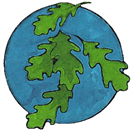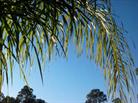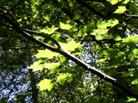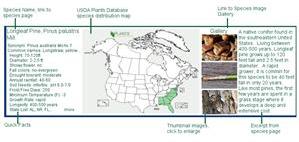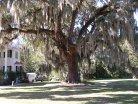
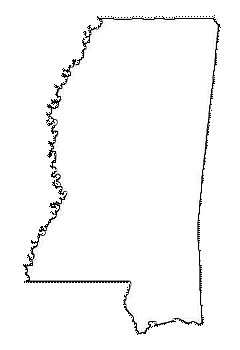

The Magnolia State, 'By valor and arms'
State Tree: Southern Magnolia
Mississippi
|
|
|
|
|
| A-Z scientific | ||
| A-Z by Common Name | ||
| Families | ||
| Browse by State | ||
| Rare or Endangered Species | ||
| Trees_with_Special_Uses | ||
| Tallest and Biggest |
| Aceraceae Maple Family | ||
| Anacardiaceae Sumac Family | ||
| Annonaceae Custard Apple Family | ||
| Aquifoliaceae Holly Family | ||
| Arecaceae, Palm Family | ||
| Betulaceae Birch family | ||
| Bignoniaceae Trumpet Creeper Family | ||
| Burseraceae Frankincense Family | ||
| Caprifoliaceae Honeysuckle Family | ||
| Chrysobalanaceae Coco-plum Family | ||
| Cornaceae Dogwood Family | ||
| Cupressaceae Cypress Family | ||
| Cyrillaceae Cyrilla Family | ||
| Ebenaceae Ebony Family | ||
| Ericaceae Heath Family | ||
| Fabaceae Pea Family | ||
| Fagaceae Beech Family | ||
| Hamamelidaceae Witch Hazel Ffamily | ||
| Hippocastanaceae Horse Chestnut Family | ||
| Juglandaceae Walnut Family | ||
| Lauraceae Laurel Family | ||
| Leitneriaceae Corkwood Family | ||
| Magnoliaceae Magnolia Family | ||
| Meliaceae Mahogany Family | ||
| Moraceae Mulberry Family | ||
| Myricaceae Bayberry Family | ||
| Myrsinaceae Myrsine Family | ||
| Myrtaceae Myrtle Family | ||
| Nyctaginaceae Four Oclock Family | ||
| Olacaceae Olax Family | ||
| Oleaceae Olive Family | ||
| Pinaceae Pine Family | ||
| Platanaceae Plane Tree Family | ||
| Polygonaceae Buckwheat Family | ||
| Rhamnaceae Buckthorn Family | ||
| Rosaceae Rose Family | ||
| Rubiaceae Madder Family | ||
| Rutaceae Rue Family | ||
| Salicaceae Willow Family | ||
| Sapindaceae Soapberry Family | ||
| Sapotaceae Sapodilla Family | ||
| Simaroubaceae Quassia Family | ||
| Styracaceae Storax Family | ||
| Symplocaceae Sweetleaf Family | ||
| Theaceae Tea Family | ||
| Tiliaceae Lindon Family | ||
| Ulmaceae Elm Family | ||
| Taxaceae Yew Family | ||
| Yucca Family |
| Maple A-Z |
| sumac_family_a-z |
| custard_apple_family_a-z |
| holly_trees_a-z |
| palm_family_a-z |
| birch_family_a-z |
| trumpet_creeper_family_a-z |
| honeysuckle_family_a-z |
| dogwood_family_a-z |
| cypress_family_a-z |
| heath_family_a-z |
| pea_family_a-z |
| beech_family_a-z |
| walnut_family_a-z |
| magnolia_family_a-z |
| olive_family_a-z |
| rose_family_a-z |
| willow_family_a-z |
| franklinia |
| elm_family_a-z |
| Federal List | ||
| State Lists | ||
| Invasive_species |
| Restoration of the American Chestnut | ||
| Restoration of the American Elm | ||
| Sustainable Forestry |
| Contact Us | ||
| Our Contributors | ||
| Photo of the Month | ||
| Usage Requirements | ||
| FAQ | ||
| Report a Broken Link |
| photo_submission |
| Photo Store |


™

Saturday, May 10, 2025

Custom Search
Native Trees of Mississippi



-Color denotes a tree that is rare or endangered
Want to add your tree to our picture gallery? Click here for details!

Thanks to a wide range of habitats,
the forests of Mississippi are diverse and cover
about 65% of the land mass within the state.
Part of the great Eastern Pine forest stretches
across Mississippi and accounts for 39% of the
overall forests. The predominant forest type is
mixed hardwoods. Mississippi is also home to
more tree farms than any other state and has
one of the largest timber economies in all of
North America.
Mississippi's forests are home to some giants
Tree lists:
•A-Z by scientific
name
•A-Z by common
name
•By Family
For state A-Z list click state name below.
•A-Z by scientific
name
•A-Z by common
name
•By Family
For state A-Z list click state name below.
Home>Browse by State>Mississippi
as well, with 10 national champion trees and 5 national co-champions. The largest tree in the
state (2009) is a baldcypress measuring 15 feet across, 46 feet around, and 70 feet tall! The
tallest tree in Mississippi is a Spruce pine towering at 154 feet. Perhaps one of the best ways
to enjoy the state's forests is to visit one of the 24 state parks or 6 National Forests, such as
Delta National Forest- the only bottomland hardwood ecosystem within the National Forest
System. Loblolly and longleaf pines shade the many hiking trails found throughout Mississippi.
In fact in Longleaf Pine Park, visitors have the chance to see some 400 year old pines- some
of the oldest pines in the state. Outside the piney forests, nature lovers will walk through old
oak forests, dogwoods, and of course the often flooded bottomland of the Mississippi delta.
There are several insect pests worthy of being mentioned found in Mississippi. Two of the
most destructive insects are the southern pine beetle and Ips engraver beetle, which come in
first and second place for killing more trees than any other insect. Redbay ambrosia beetle,
emerald ash borer, gypsy moths, and the now common exotic Sirex woodwasp are a few
more non-native pests threating the forests of Mississippi and the south.

We are part of the Hubpages community.
Click here for more info.
Click here for more info.


Mississippi Tree Facts
Forested acres: 19.8 million
Percent of land forested: 65%
Predominant forest types: Hardwoods (46%), Pines (39%)
Number of State Parks or Forests: 24
Number of National Parks/Forests: 6
Number of Tree city USA communities: 37
Number of invasive tree species (declared and/or present): 12 (see state list for noxious/invasive plants)
Damaging insects of high concern: Ips Engraver Beetle, Redbay Ambrosia Beetle, Emerald Ash Borer
Disease/Pathogen of concern: Annosus Root Rot, Brown Spot Needle Blight, Fusiform Rust
Number of tree families in our collection: 40
Number of endangered or threatened species in our collection: 1
References:
Mississippi Forestry Commission
National Park Service, http://www.fs.usda.gov/
USDA, Forestry Service, FEIS
Additional state resources:
Mississippi State Parks
Mississippi National Forests
Mississippi Exotic Pest Plant Council
Percent of land forested: 65%
Predominant forest types: Hardwoods (46%), Pines (39%)
Number of State Parks or Forests: 24
Number of National Parks/Forests: 6
Number of Tree city USA communities: 37
Number of invasive tree species (declared and/or present): 12 (see state list for noxious/invasive plants)
Damaging insects of high concern: Ips Engraver Beetle, Redbay Ambrosia Beetle, Emerald Ash Borer
Disease/Pathogen of concern: Annosus Root Rot, Brown Spot Needle Blight, Fusiform Rust
Number of tree families in our collection: 40
Number of endangered or threatened species in our collection: 1
References:
Mississippi Forestry Commission
National Park Service, http://www.fs.usda.gov/
USDA, Forestry Service, FEIS
Additional state resources:
Mississippi State Parks
Mississippi National Forests
Mississippi Exotic Pest Plant Council


Follow the links to view species native to Mississippi. If the genus is not linked, species are listed on the family page.
Aceraceae, Maple
Anacardiaceae, Sumac
Rhus, Sumac
Annonaceae, Custard-apple
Aquifoliaceae, Holly
Ilex, Holly
Arecaceae, Palm
Betulaceae, Birch
Betula, Birch
Carpinus, Hornbeam
Corylus, Hazelnut
Ostrya, Hophornbeam
Bignoniaceae, Trumpet Creeper
Catalpa, Catalpa
Chilopsis, Desert Willow
Caprifoliaceae, Honeysuckle
Sambucus, Elderberry
Viburnum, Viburnum
Cornaceae, Dogwood
Cornus, Dogwood
Nyssa, Tupelo
Aceraceae, Maple
Anacardiaceae, Sumac
Rhus, Sumac
Annonaceae, Custard-apple
Aquifoliaceae, Holly
Ilex, Holly
Arecaceae, Palm
Betulaceae, Birch
Betula, Birch
Carpinus, Hornbeam
Corylus, Hazelnut
Ostrya, Hophornbeam
Bignoniaceae, Trumpet Creeper
Catalpa, Catalpa
Chilopsis, Desert Willow
Caprifoliaceae, Honeysuckle
Sambucus, Elderberry
Viburnum, Viburnum
Cornaceae, Dogwood
Cornus, Dogwood
Nyssa, Tupelo
Mississippi Tree Families and Genera
click to enlarge.
Useful information while browsing species:
• How to read a botanical name
• How to use our species boxes:
• How to read a botanical name
• How to use our species boxes:
-Color denotes a tree that is rare or endangered
Please note: This is not a complete list of all native tree families and species found in Mississippi. We are constantly working towards a more comprehensive list and will add families and their species as completed.
Additional Resources:
North American Native Tree Families
North American A to Z List by Scientific Name
North American A to Z List by Common Name
North American Native Tree Families
North American A to Z List by Scientific Name
North American A to Z List by Common Name
Fabaceae, Pea
Fagaceae, Beech
Quercus, Oak
Hamamelidaceae, Witch-hazel
Hippocastanaceae, Horse-chestnut
Juglandaceae, Walnut
Carya, Hickory
Juglans, Walnut
Lauraceae, Laurel
Leitneriaceae, Corkwood
Magnoliaceae, Magnolia
Moraceae, Mulberry
Morus, Mulberry
Myricaceae, Bayberry
Oleaceae, Olive Family
Fraxinus, Ash
Fagaceae, Beech
Quercus, Oak
Hamamelidaceae, Witch-hazel
Hippocastanaceae, Horse-chestnut
Juglandaceae, Walnut
Carya, Hickory
Juglans, Walnut
Lauraceae, Laurel
Leitneriaceae, Corkwood
Magnoliaceae, Magnolia
Moraceae, Mulberry
Morus, Mulberry
Myricaceae, Bayberry
Oleaceae, Olive Family
Fraxinus, Ash

Rhamnaceae, Buckthorn
Rosaceae, Rose
Crataegus, Hawthorn
Malus, Crab-apple
Prunus, Plum/Cherry
Rubiaceae, Madder
Rutaceae, Rue
Salicaceae, Willow
Populus, Cottonwood
Salix, Willow
Sapindaceae, Soapberry
Sapotaceae, Sapodilla
Styracaceae, Storax
Symplocaceae, Sweetleaf
Theaceae, Tea
Tiliaceae, Lindon
Tilia, Basswood
Ulmaceae, Elm
Celtis, Hackberry
Ulmus, Elm
Yucca, Yucca
Rosaceae, Rose
Crataegus, Hawthorn
Malus, Crab-apple
Prunus, Plum/Cherry
Rubiaceae, Madder
Rutaceae, Rue
Salicaceae, Willow
Populus, Cottonwood
Salix, Willow
Sapindaceae, Soapberry
Sapotaceae, Sapodilla
Styracaceae, Storax
Symplocaceae, Sweetleaf
Theaceae, Tea
Tiliaceae, Lindon
Tilia, Basswood
Ulmaceae, Elm
Celtis, Hackberry
Ulmus, Elm
Yucca, Yucca
Mississippi Endangered or Threatened Tree Species

Tree species present in Mississippi with Endangered, Proposed Endangered, Threatened, or Proposed Threatened Federal status:
Endangered Status:
Lindera melissifolia- Southern Spicebush, Pondberry
Endangered Status:
Lindera melissifolia- Southern Spicebush, Pondberry

Looking for a nursery near you?
Check out our nursery listing by county below!
Sorry, we do not currently have any tree nursery listings for this state. We do update these lists, so please check back.
Check out our nursery listing by county below!
Sorry, we do not currently have any tree nursery listings for this state. We do update these lists, so please check back.
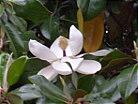
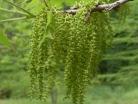
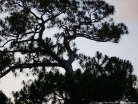
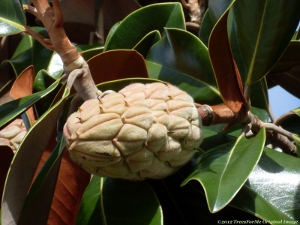
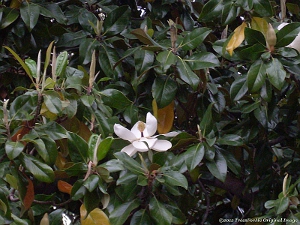
Originally named the state flower in November of 1900, the southern magnolia is the state tree of Mississippi. It became the state tree in 1938 after a vote among school children, beating out oak, pine, and dogwood as possible options. Mississippi is one of only two states (the other being Virginia) where the state flower and the state tree are one in the same.
A long lived evergreen species, southern magnolia is found throughout the southeastern United States. The glossy leaves are dark green on top and yellowish-beige to rich brown on the underside. In the spring, the highly fragrant showy white flowers, which this species is prized for, emerge. Southern magnolias are large trees and are routinely used as a center piece in landscaping. Although typically pruned to have a more pyramidal crown and bare trunk, when left to its own devices, southern magnolias have an irregular canopy
A long lived evergreen species, southern magnolia is found throughout the southeastern United States. The glossy leaves are dark green on top and yellowish-beige to rich brown on the underside. In the spring, the highly fragrant showy white flowers, which this species is prized for, emerge. Southern magnolias are large trees and are routinely used as a center piece in landscaping. Although typically pruned to have a more pyramidal crown and bare trunk, when left to its own devices, southern magnolias have an irregular canopy
Additional Resources:
North American Rare and Endangered Trees
External Links:
USDA PLANTS Database
Full Mississippi Endangered List
North American Rare and Endangered Trees
External Links:
USDA PLANTS Database
Full Mississippi Endangered List
with many large twisting branches lower to the ground. At maturity, Magnolia
Southern Magnolia, Magnolia grandiflora
©2012 TreesForMe Original Image. See usage requirements.
Southern Magnolia, Magnolia grandiflora
©2012 TreesForMe Original Image. See usage requirements.
grandiflora may reach 100 feet but most fall far short of that. In fact, the current national champion (2012) is 66 feet tall with a circumference of 27 feet. Considered a fast growing tree, young trees may attain heights of 40 feet in the first 20 years.
After it flowers, slightly hairy large seed pods grow at the tips of thick stalks, either upright or horizontally among the foliage. Gradually, they will increase in size to maturity and then begin to dry. The soft fleshy outer seed coat gives way to the woody chambered interior, exposing the many pea sized red seeds. Eventually, the seed pod will fall from the tree, scattering the seeds on the forest floor to be dispersed by birds, small mammals, or heavy rains.
Read More
After it flowers, slightly hairy large seed pods grow at the tips of thick stalks, either upright or horizontally among the foliage. Gradually, they will increase in size to maturity and then begin to dry. The soft fleshy outer seed coat gives way to the woody chambered interior, exposing the many pea sized red seeds. Eventually, the seed pod will fall from the tree, scattering the seeds on the forest floor to be dispersed by birds, small mammals, or heavy rains.
Read More
